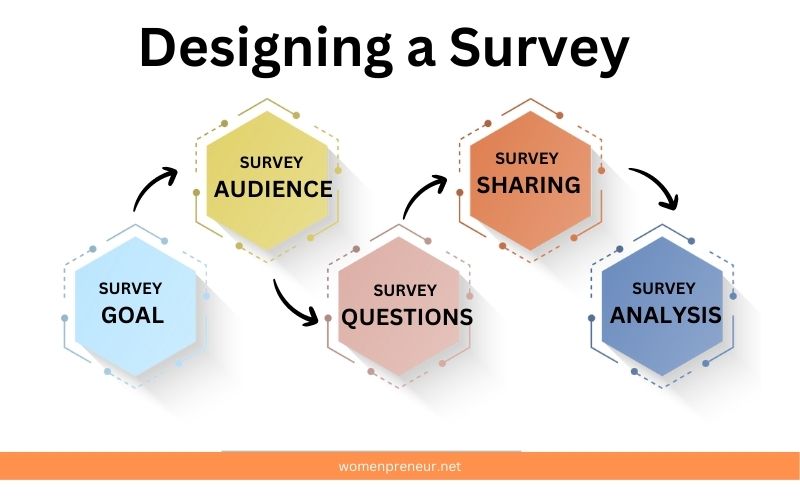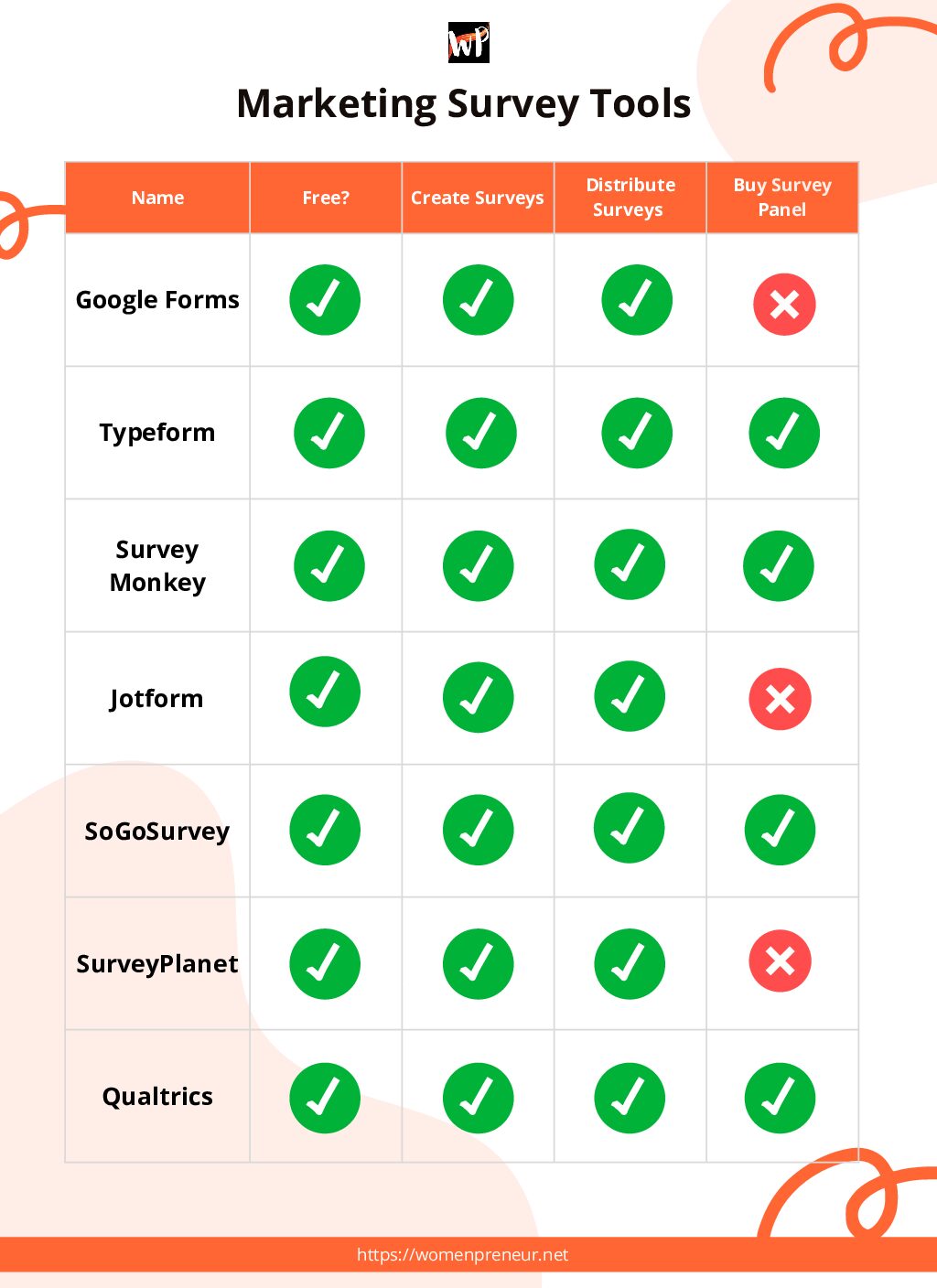Grow your business
Everything you need to know about building marketing surveys for free
The immense potential of marketing surveys
A marketing survey is a process that business owners and entrepreneurs use to collect data about their product or service from their target market. This data can be used to create strategic marketing campaigns, innovate new products, and make better business decisions. Simply put, surveys help you gather feedback which can be used to improve your buisness.

Types of Surveys
Product research surveys
Customer satisfaction surveys
-
Asking feedback on sales process
-
Post sale experience
-
Product or service related feedback
-
Warranty support feedback
-
Customer support feedback
Collecting this information regularly will allow you to see trends in your data and identify areas of opportunities that you can address with your teams.

Market research surveys
Competitive analysis surveys
Design of a survey:
-
The goal or purpose of the survey: Be very clear about what you hope to achieve by conducting the survey.
-
The target audience: Who are you targeting with the survey? The survey should be targeted to the people who can provide the most useful information related to your product or service
- The questions: What questions do you need to ask in order to achieve your goals?
-
The distribution method: How will you share the survey with this target audience?
-
The analysis: How will you analyze the data collected from the survey

Types of questions on survey
-
Use clear and concise language: The questions should be clear, easy to understand and not cause any ambiguity in the minds of the people taking the survey. Avoid using jargon or technical terms.
-
Use a variety of question types: There are many different types of questions that you can use in a survey. Some common types include:
-
-
Screening questions: These questions help you weed out respondents that does not totally meet the requirements of your target audience.
-
Closed-ended questions: These questions have a limited number of possible answers, such as multiple choice or checkbox questions. Be careful not to ask double-barreled questions which are questions that ask two things at once. For example, a double-barreled question might be “Do you like our restaurant’s ambience and food”.
-
Open-ended questions: These questions allow respondents to provide their own answers, in their own words.
-
Scaled questions: These questions ask respondents to rate something on a scale such as a 1-to-10 scale.
-
-
-
Carefully determine which questions should be mandatory and which ones should be optional.
-
Surveys can be built with advanced logic where answers to one question leads a certain set of questions such as branching logic or conditional logic. This can be helpful when you want a certain set of questions to be answered by the audience only if they meet a certain criteria or answer.
Target audience for your surveys

Email Marketing list
Social media advertising
Survey Panels

-
Most importantly – be very clear about what you hope to achieve from the survey. This will help you determine the right target audience, the questions and also the right type of survey.
-
Do ample research – Be sure to do your research and compare different companies and their offerings. Understand how they recruit and source their respondents. This will help you ensure that the data collected by the survey is accurate, reliable and meets your needs. Also, get familiar with their FAQs to understand their process and their refund policy if they are not successful in providing the agreed number of survey responses.
Best free tools to build surveys
Google Forms
Typeform
SurveyMonkey
Jotform
Jotform is very powerful and delivers several additional capabilities aside from surveys.

SoGoSurvey / Sogolytics
SurveyPlanet
Qualtrics
Here’s a handy table that lists all the marketing survey tools and their key features. You can also access download same from our Resources tab.

Once you’ve chosen a free online survey tool, you can start creating your marketing survey. Be sure to plan your survey carefully and ask the right questions. If you are not purchasing survey panel or respondents, then consider offering an incentive to your target audience for completing the survey. This could be a discount, a free gift, or even just a thank-you note.
And once you’ve collected your responses, be sure to analyze them and use them to make informed decisions for your marketing, product design and operations! All the best!

